The Rocket (Chinese) executive editor Lam Choong Wah analysed and break down the 13th general election results. He points out the marginal seats that both Barisan Nasional and Pakatan Rakyat will be looking out for and suggest the strategies for Pakatan to win these seats. Translated by T.K Tan.
Before the 13th general elections (13GE), three opinion surveys conducted around the period had indicated that Pakatan Rakyat (PR) would win the 13GE narrowly.
On 25 April, University Malaysia Centre for Democratic and Elections had declared that its survey shows that from the date of the dissolution of the parliament on 3 April to 20 April, based on 1,407 respondents’ replies, Anwar had received 43 percent support while Najib was four percent behind behind.
On the other hand Merdeka Centre had on the 3 May reported that in an opinion poll survey it conducted from 28 April to 1 May, 42 percent of those surveyed said that PR should be given the chance to form government, while 41 percent thought Barisan Nasional (BN) deserved to continue as government. At the same time the survey also stated that PR could win 89 parliamentary seats and BN 86 seats with 46 seats in the tossed up column.
Another opinion poll survey by ZENTRUM released on 4 May said that PR was leading BN by 52 percent to 48 percent.
Looking back at the three opinion survey polls, the results almost mirrored the actual 13GE results. Particularly Merdeka Centre’s projection of PR winning 89 seats and ZENTRUM’s popular vote comparison were spot on for PR’s actual results in the GE.
However these figures merely provide possible insights to the future. For further enlightenment, one needs to interpret the data judiciously.
In any case the important task on hand is to analyse the reasons why PR lost the GE and the steps to address these weaknesses. Besides the lop-sided electoral practices favouring BN, PR also needs to address the political awareness gap between the urban and rural electorate. In addition, in spite of the increase of support from the Malay and native constituencies, their support was still not substantial enough to affect change.
Reflections of the 13GE
The GE results reveal the fact that urban voters are increasingly trending towards PR while the rural ones are still very much with BN. However a point to note is that overall PR saw its support from the Malays, Chinese, Indians, Sabah natives and Sarawak natives its votes increased across the board. BN on the other hand saw all its support reduced throughout the country save for Kedah and isolated seats.
There were several reasons for PR’s loss in Kedah. PAS Menteri Besar (MB) Azizan Abdul Razak’s lacklustre performance was a factor in the PR’s loss. Secondly, PAS’s failure to provide a viable MB candidate resulted in an ambivalent attitude amongst the Kedah voters towards PR.
Thirdly, BN’s monetary handouts such as the RM 500 under BR1M program had also played a significant role in swaying the rural and lower income voters’ categories. As a result of Kedah’s instability that affected support for PR, it was also carried over into neighbouring Perlis.
In addition, during the campaigning period, rumours abounded that as a result of the massive turnout for PR’s ceramahs which were mostly attended by non-Malays, BN’s incitement of the Malays to believe that if a change of government was to take place, the Malay political dominance would be diminished while the non-Malays would benefit politically seems to have succeeded. In short, a zero-sum mentality kicked in.
This is reminiscence of the 1999 GE results, where the majority of the Malays rooted for the opposition while the non-Malays stayed with BN for the fear of instability. The 2013 GE was a mirror image of the 1999 contest in reverse.
Towards the end of the GE campaign period PR’s designated Prime Minister candidate, Anwar Ibrahim had voiced concern that the above scenario could happen and attempted to assuage the Malays’ psyche. However it had evidently failed to reach the grassroots and create an impact.
Rural voters as kingmakers
At the same time, PR’s campaigning strategy had seen results bear fruit in the urban areas while failing in the rural areas as they were not familiar with the Orang Asli, settlers and Sabah and Sarawak natives’ needs. PR’s People Manifesto was failed to resonate with the rural dwellers. Not many inquired further into what PR was offering
Based on many reports by PR’s canvassers in their visits to rural areas, rural voters would courteously accept PR’s handbills and reading materials without inquiring further or engage with the PR campaigners. Furthermore in most of PR’s ceramahs and talks in the rural Malay areas, attendance was low. In many cases, it was less than 20 people.
The 5th May GE result proves that the rural seats are still very much in BN’s column. Looking exclusively at rural seats with low number of voters and small constituencies, there are 89 seats with less than 50,000 voters and two seats with around 50,000 voters (Bera in Pahang and Kota Kinabalu in Sabah). These 91 seats constituted 41 percent of the total number of parliamentary seats. BN won 85 of these seats.
In these 85 seats, BN won 148,749 votes. This figure constitutes 11.4 percent of the total number of registered voters throughout the country (13,268,002). With 11.4 percent of the votes BN won 85 seats!
In a public forum held on 16 May, UMCEDEL director Prof Mohd Redzuan Othman said that BN’s most potent campaign weapon was the various forms of BR1M monetary aid. According to him, on average 75 percent of those who received the monetary aid voted for BN.
He pointed out that in the seats won by BN, 80 percent of the voters who received the monetary aid supported BN. Whereas in the areas won by PR, only 60 percent who received BR1M voted for BN. Using the example of the Lembah Pantai parliamentary seat in Kuala Lumpur, he said the BR1M affected 54 percent of the recipients’ voting choice.
Therefore, such populist measures as BR1M has significant impact in areas where voters are less educated and less exposed to alternative media.
Comparing Thailand and Malaysia
In South East Asia, the other country which has practised such expansive populist policies is Thailand under the regime of its former prime minister (PM) Thaksin Shinawatra who was ousted in 2006 by a military coup. His populist measures targeted at rural area voters has such strong effect that till this day his party, now helmed by his sister and current Thailand PM Yingluck is still popular with the rural voters.
Amongst the highlights of the Thaksin’s populist measures for the rural dwellers were debt waiver for those in farming business, providing low interest agriculture loans of 3.5 percent, fuel subsidies and subsidising public health system substantially where every Thai citizen only need to pay 30 Baht (around RM 3) for medical expenses. Such populist measures have resulted in big and enduring support for Thaksin.
In Malaysia’s case, since assuming the PM post, Najib has been rolling out several populist measures along the lines of what Thaksin did in Thailand such as the BR1M monetary aid, 1Malaysia convenience shop (KR1M), tyre subsidies for taxis, cash rebates for smart phones purchases and grants for school children. These populist measures are big in scale and without regard to cost, for the motive is undeniably to win the voters’ support.
Though Malaysia’ populist measures seems to have mimicked Thailand’s success in winning rural electorate support to maintain power, there are substantial differences between Malaysia and Thailand.
As the majority of Thailand’s electorate reside rural areas, Thaksin needs to win the majority of these voters’ support in order to rule. In Malaysia due to blatant gerrymandering over the years, 91 seats with around 50,000 or less voters were drawn up. Any party merely needs to win the majority of the votes in these seats can win them handily. BN won 85 of these 91 seats, scoring a 93.4 percent success rate!
However, as Thailand’s urban voters only constitute 34 percent of the total electorate it is logical that the seats are skewed towards rural weightage. In Malaysia on the other hand, 72 percent of its residents reside in urban areas yet rural areas constitutes 41 percent of the total number of seats.
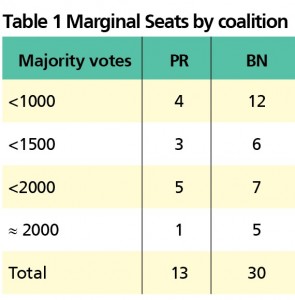
Marginal seats
The 13th GE represented Malaysia’s best chances to elect a new government in the 56 years of its existence. In substance,PR has achieved that feat by winning 51 percent of the popular votes, besting BN’s 47 percent. However due to gerrymandering as mentioned above, BN continues to rule the country.
Analysing through the GE results, if one sets the 2,000 majority votes winning margin as a benchmark, there were 43 seats that can be classified as marginal seats. The majority of them are rural seats and seats won by BN. This means that the urban voters are indifferent to BN’s election strategy, whether to its populist measures or personal attacks political campaigning.
Of the 43 seats, 30 are BN’s while PR has 13 (refer Table 1). If PR is to begin focusing its work in these 30 BN seats now, by approaching the voters here more frequently and building its presence by establishing political activities here, it is possible that in the next GE there could be political change in these seats.
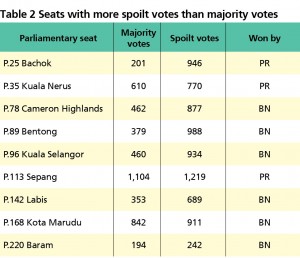 At the same time, there were nine seats with more spoilt votes than the majority vote margin (BN 6, PR 3) (refer Table 2).
At the same time, there were nine seats with more spoilt votes than the majority vote margin (BN 6, PR 3) (refer Table 2).
These seats can be classified as unusual. At the time of this article, PR is seeking legal redress to overturn the results in some of these seats.
Dividing the seats by region and political coalition, eight of the marginal seats are in Sabah and Sarawak, 35 of them in the Peninsular Malaysia. PR has two marginal seats in Sabah and Sarawak and 11 in Peninsular Malaysia, while BN has six in Sabah and Sarawak and 24 in Peninsular Malaysia.
Furthermore, with the intensive campaigning by PR, six of BN’s Johor seats have become marginal seats. BN has five marginal seats in Selangor and Kuala Lumpur, four in Perak, three in Pahang, Kelantan and Kedah with two each and one in Perlis.
In these 30 BN marginal seats, BN obtained 629,109 votes while PR registered 590,659 votes, a difference of 38,450 votes only.
One can infer that Peninsular Malaysia is still a major battleground for both coalitions. If PR is to win Putrajaya, it needs to secure 11 of its marginal seats in Peninsular Malaysia. In addition it needs to win an additional 39,000 votes in BN’s 24 Peninsular Malaysia marginal seats and several of BN’s Sabah and Sarawak marginal seats. Johor, Selangor, Kuala Lumpur, Perak and Pahang will be the main battleground states as they constitute 18 of the BN’s marginal seats.
Winning the next GE
Summing up the above disadvantages that were identified, PR has to tackle them head-on in order to win the next GE and end the rule of the longest racial-based regime in the world, Barisan Nasional.
One of the ways is to apply pressure on the government to reform the electoral practices and the electoral area re-delineation practise. This is to allow the elections to truly reflect the principle of one-person-one-vote, the differences between seats to be no more than 15 percent and it should be fair and just.
However BN is not going to surrender all these lop-sided electoral advantages easily. PR needs to draft out a new election strategy to overcome such discriminatory barriers in order to win more votes.
Penetrating the rural areas is PR’s new focus. DAP, PKR and PAS needs to strategise and work closer to attract the rural area voters’ support , especially the Malay areas. In terms of strategy, PR needs to invest more manpower and financial resources to organise more political activities in the rural areas and to stop its lecturing approach in mingling with the rural voters.
Due to the differences in living and education standards and political awareness, many rural voters are unable to absorb the complex and mostly urban-based issues ceramahs organised by PR campaigners. To approach the rural voters, one needs to solve their issues and to conduct more small-scale interactive talks and build personal relationship with them.
PR need to further draft up and devise a more detailed and convincing plan to implement its stated aim and policies to increase the income of the households earning below RM 3,000 a month.
To counter BN’s spendthrift populist measures, PR should look at using easy to understand public relationship materials such as comics to explain the dangers of BN’s long-term populist measures, in which the government will have to increase taxes and national debt to fund them and that will ultimately bring harm to the country.
At the same time, in order to sustain the winds of change engendered in the 13th GE and protests against the unfair electoral practices, PR would need to keep up the discussions on economic, political and electoral reforms in order to sustain its support in the urban areas. Adapting to and addressing the urban and rural electorate’s different election rhythms and patterns impact will be crucial.
Another thing to note is the effect of urbanisation. Malaysia’s urban population is growing by two percent or more a year which means in five years time when the 14th GE comes around, there may be around 80 percent of Malaysians residing in the urban areas.
With more urbanisation means more exposure to internet for the urban dwellers, which in turn will impact the the rural folks’s lifestyle substantially. In political terms that is beneficial for PR and may ultimately swing victory to PR in the next GE.

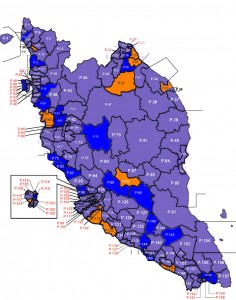
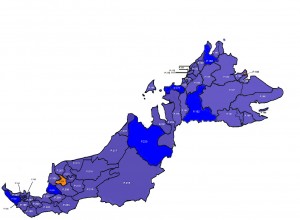
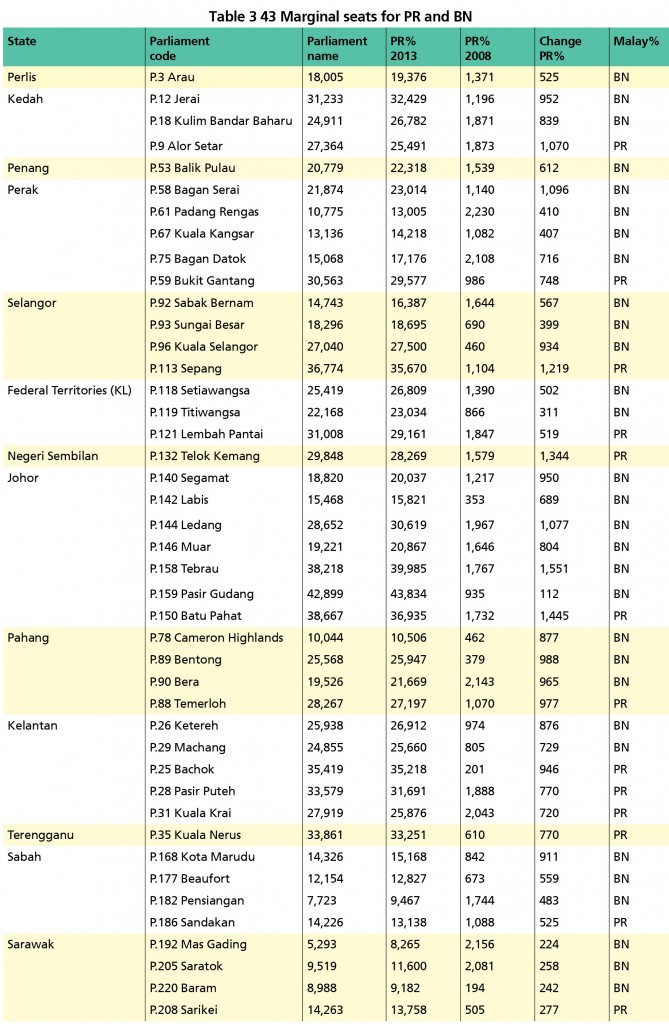

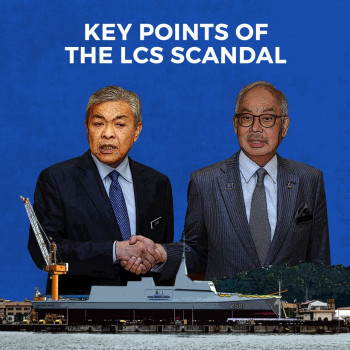
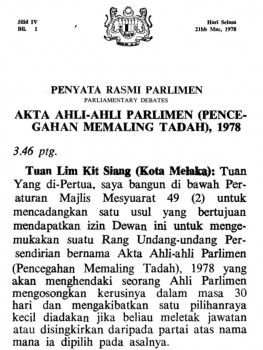
A very good review of GE13. Based this review I think PR should grab this opportunity to educate the rural folks. The details will be forwarded to PR Central Committees in a different forum or by letters so as UMNO BN cannot mimic.